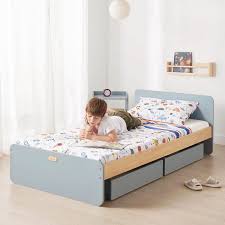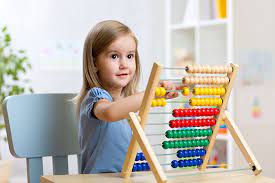
Exploring the Evolving Trends in the Kids’ Furniture Market
The Growing Market for Kids’ Furniture
In recent years, the market for kids’ furniture has seen significant growth as parents increasingly seek functional, safe, and stylish options for their children’s rooms. With a focus on quality, durability, and design, manufacturers are catering to the evolving needs of families looking to create inviting and practical spaces for their little ones.
One key trend in the kids’ furniture market is the emphasis on multifunctional pieces that can adapt to different stages of a child’s development. From convertible cribs that transform into toddler beds to bunk beds with built-in storage solutions, parents are looking for furniture that can grow with their children.
Safety is another top priority for parents when choosing kids’ furniture. Manufacturers are responding by using non-toxic materials, rounded edges, and sturdy construction to ensure that every piece meets stringent safety standards. This focus on safety gives parents peace of mind knowing that their children are surrounded by furniture designed with their well-being in mind.
Design plays a crucial role in the kids’ furniture market as well. Bright colours, playful patterns, and themed designs are popular choices for creating fun and engaging spaces that reflect children’s personalities. Additionally, eco-friendly options made from sustainable materials are gaining traction as more families prioritise sustainability in their purchasing decisions.
Online retailers have also contributed to the growth of the kids’ furniture market by offering a wide selection of options at varying price points. This accessibility allows parents to compare products easily and find the perfect pieces to suit their budget and style preferences.
As the demand for high-quality kids’ furniture continues to rise, manufacturers are innovating and expanding their product lines to meet the diverse needs of modern families. Whether it’s a whimsical bed frame, a functional study desk, or a cosy reading nook, there’s no shortage of options available for creating enchanting spaces that inspire creativity and comfort for children.
The future looks bright for the kids’ furniture market as it continues to evolve alongside changing trends and consumer preferences. With an emphasis on safety, versatility, design, and sustainability, parents can look forward to an exciting array of choices when furnishing their children’s rooms.
Exploring the Benefits of the Kids’ Furniture Market: Safety, Sustainability, and Creative Design
- 1. Wide variety of designs to suit different tastes and preferences.
- 2. Focus on safety standards ensures peace of mind for parents.
- 3. Multifunctional pieces that can adapt to children’s changing needs.
- 4. Increasing availability of eco-friendly and sustainable options.
- 5. Bright colours and playful patterns create fun and engaging spaces for kids.
- 6. Online retailers offer convenient shopping with a wide range of choices.
- 7. Innovative designs that inspire creativity and imagination in children.
Challenges in the Kids’ Furniture Market: Cost, Sustainability, and Practicality
- High cost of quality kids’ furniture can be a barrier for budget-conscious families.
- Limited availability of eco-friendly and sustainable options in the market.
- Some kids’ furniture designs may lack practicality and functionality for everyday use.
- Assembly and installation of certain furniture pieces can be time-consuming and challenging.
- Durability issues with lower-priced kids’ furniture may result in frequent replacements or repairs.
- Trends in kids’ furniture can change quickly, making it challenging to keep up with the latest styles.
1. Wide variety of designs to suit different tastes and preferences.
The kids’ furniture market offers a wide variety of designs to cater to diverse tastes and preferences, ensuring that parents can find the perfect pieces to complement their children’s personalities and room decor. From whimsical and colourful designs for younger children to sleek and modern styles for teenagers, there is something for every taste. This abundance of design options allows families to create unique and personalised spaces that reflect their children’s individuality, fostering a sense of ownership and comfort in their own rooms.
2. Focus on safety standards ensures peace of mind for parents.
One significant advantage of the kids’ furniture market is its strong focus on safety standards, providing peace of mind for parents. Manufacturers prioritise using non-toxic materials, rounded edges, and sturdy construction to ensure that every piece of furniture meets stringent safety requirements. By placing such emphasis on safety, parents can rest assured that their children are surrounded by furniture designed with their well-being as the top priority. This commitment to safety standards not only enhances the overall quality of kids’ furniture but also reinforces trust between manufacturers and families, creating a secure and reassuring environment for children to thrive in.
3. Multifunctional pieces that can adapt to children’s changing needs.
One of the standout advantages of the kids’ furniture market is the availability of multifunctional pieces that can seamlessly adapt to children’s changing needs. From convertible cribs that evolve into toddler beds to bunk beds with integrated storage solutions, these versatile furniture items offer practicality and longevity. Parents appreciate the flexibility these pieces provide, allowing them to invest in furniture that can grow with their children and accommodate their evolving preferences and requirements over time. This pro not only saves money in the long run but also ensures that children have furniture that remains relevant and functional as they transition through different stages of development.
4. Increasing availability of eco-friendly and sustainable options.
An increasingly positive aspect of the kids’ furniture market is the growing availability of eco-friendly and sustainable options. Parents are now able to choose from a variety of furniture pieces made from responsibly sourced materials that are designed to have a minimal impact on the environment. This shift towards sustainability not only benefits the planet but also instils important values in children about the importance of caring for our world. By opting for eco-friendly kids’ furniture, families can create stylish and safe spaces for their little ones while contributing to a greener future for generations to come.
5. Bright colours and playful patterns create fun and engaging spaces for kids.
One standout advantage of the kids’ furniture market is the use of bright colours and playful patterns, which contribute to the creation of fun and engaging spaces for children. By incorporating vibrant hues and whimsical designs into furniture pieces, manufacturers are able to stimulate children’s imagination and foster a sense of joy and creativity in their living environments. These lively elements not only add visual appeal to kids’ rooms but also help in shaping a positive and stimulating atmosphere that encourages exploration, playfulness, and self-expression.
6. Online retailers offer convenient shopping with a wide range of choices.
One significant advantage of the kids’ furniture market is the convenience offered by online retailers, who provide a seamless shopping experience with an extensive array of choices. Parents can browse through a diverse selection of furniture options from the comfort of their homes, compare prices and features easily, and make informed decisions based on their specific needs and preferences. The convenience of online shopping allows busy parents to find the perfect pieces for their children’s rooms without the hassle of visiting multiple stores, making it easier than ever to create inviting and functional spaces for their little ones.
7. Innovative designs that inspire creativity and imagination in children.
One standout advantage of the kids’ furniture market is the array of innovative designs that spark creativity and ignite the imagination in children. From whimsical bed frames shaped like castles to study desks with built-in interactive features, these imaginative pieces not only serve a practical purpose but also serve as a canvas for endless storytelling and play. By incorporating elements that encourage exploration and self-expression, such innovative designs elevate the experience of furnishing a child’s room into a journey of inspiration and wonder, fostering a nurturing environment where creativity can flourish.
High cost of quality kids’ furniture can be a barrier for budget-conscious families.
The high cost of quality kids’ furniture can pose a significant challenge for budget-conscious families looking to furnish their children’s rooms. While parents prioritise safety, durability, and design when choosing furniture for their little ones, the price tag of high-quality pieces can often be prohibitive. This barrier may force families to compromise on the quality or quantity of furniture they purchase, potentially impacting the overall functionality and aesthetic appeal of their children’s spaces. Finding a balance between affordability and quality is crucial for ensuring that all families have access to safe and well-designed kids’ furniture without breaking the bank.
Limited availability of eco-friendly and sustainable options in the market.
One notable con in the kids’ furniture market is the limited availability of eco-friendly and sustainable options. While there is a growing demand for furniture made from environmentally friendly materials, such as reclaimed wood or non-toxic finishes, the options in the market remain relatively scarce. Parents who prioritise sustainability may find it challenging to source furniture that aligns with their values, leading to a lack of diverse choices when it comes to eco-conscious kids’ furniture. This limitation underscores the need for manufacturers to expand their offerings and invest in more sustainable production practices to meet the increasing demand for environmentally responsible furniture solutions in children’s spaces.
Some kids’ furniture designs may lack practicality and functionality for everyday use.
In the kids’ furniture market, a notable con is that some designs may prioritise aesthetics over practicality and functionality for everyday use. While visually appealing pieces can enhance the look of a child’s room, they may not always offer the necessary storage, durability, or versatility needed to withstand the demands of daily use. Parents may find themselves grappling with furniture that looks great but falls short in meeting their practical needs, highlighting the importance of striking a balance between style and functionality when choosing pieces for their children’s spaces.
Assembly and installation of certain furniture pieces can be time-consuming and challenging.
One notable drawback of the kids’ furniture market is the often time-consuming and challenging process of assembling and installing certain furniture pieces. Parents may find themselves faced with complex instructions, numerous parts, and the need for specific tools, making the task daunting and frustrating. This can lead to delays in setting up a child’s room and may require additional assistance or professional help, adding to the overall cost and inconvenience of acquiring new furniture for kids.
Durability issues with lower-priced kids’ furniture may result in frequent replacements or repairs.
One significant drawback in the kids’ furniture market is the durability issues often associated with lower-priced options. While budget-friendly furniture may seem like a cost-effective choice initially, the quality of materials and construction may not withstand the wear and tear of active children. This can lead to frequent replacements or repairs, ultimately costing parents more in the long run and causing inconvenience. Investing in higher-quality, albeit pricier, kids’ furniture may prove to be a wiser choice for those seeking longevity and reliability in their purchases.
Trends in kids’ furniture can change quickly, making it challenging to keep up with the latest styles.
One significant con of the kids’ furniture market is the rapid pace at which trends evolve, making it difficult for parents to stay current with the latest styles. With design preferences shifting frequently and new themes emerging regularly, keeping up with these changes can be a challenge. This constant flux in trends may lead to feelings of pressure or uncertainty when selecting furniture for children’s rooms, as parents strive to create spaces that are both fashionable and functional amidst the ever-changing landscape of kids’ furniture design.



